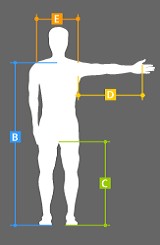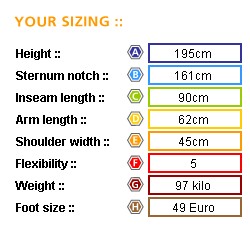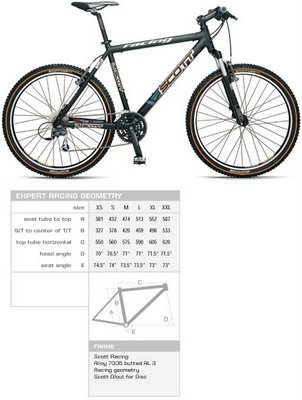
To maximize comfort and performance on a bicycle, fit is essential – even more important than components, frame materials, or design.
Kuna igaüks ajab oma tarkust ning seda päris õiget tõde pole ma veel enda jaoks leidnud , siis otsustasin algusest peale hakata ning ennast kõigepealt ära mõõta. Vahel ma kipun pilli lõhki ajama, sest mul on vaja teada "mis karul kõhus on" ja kuidas need asjad ikka detailideni töötavad. Mitte midagi ei ole siin ilmas niisama.
Aegajalt mul annavad igast tervisehädad tunda. Ma olen 100% kindel, et need ei ole niisama tulnud. Selg valutab, põlved valutavad, randmed valutavad ja ma kahtlustan, et selle niisama valutamise taga on midagi enamat.
Jalgrattasõidus kipub vist sõiduasend küllaltki palju sõitja enesetunnet kui ka sõidutulemusi mõjutama. Tegemist on ju siiski küllaltki sunniviisilise asendiga kuhu teinekord unustad end tundideks. Seega peaks olema sõiduasend võimalikult ergonoomiline ja custom fit ehk niipalju kui võimalik siis oma tagumiku järgi paika seatud.
Lihtsalt ajaloo huvides panin siia kirja oma tänased mõõtetulemused, et teinekord samal teemal diskuteerides saaks üle vaadata millised olid minu mõõdud antud hetkel ning millise raamiga sõitsin.

From the floor to sternum notch(161cm). This measurement is used to determine your torso length, once we subtract out the inseam measurement. This is key in determining the optimal rider “cockpit” size.
The measurement of the inseam (90cm). This measurement of leg length is crucial in determining the correct frame size. Because road bicycles come in frame sizes in increments of a centimeter, it is very important that the inseam measurement is taken accurately.
Frame size is the most important factor in determining leg position, which is the key to maximizing performance and comfort and avoiding injury.
the measurement of arm length (62cm). This measurement, in conjunction with the sternum measurement, is important for determining the overall length from seatpost to handlebar - the rider's “cockpit.” The cockpit of a bicycle is the most crucial dimension of bicycle sizing. It has the most influence on the rider's comfort, ride quality, and overall performance.
Proper top tube and stem fit will provide you with a comfortable and "neutral" cockpit, where you are neither cramped nor stretched on the bike. This is the most important measurement for long-term riding comfort.
Shoulder measurement (45cm). This measurement
determines the width of your handlebars. The ideal handlebar size will balance the rider’s aerodynamic positioning with comfort in several hand positions.
Flexibility measurement (5 - fingers touch toes). Flexibility helps determine your saddle to stem drop and overall reach.
Weight measurement (97kg). Your weight is important in determining which products are safe for you. With the advent of new materials and designs in bicycle componentry, manufacturers may use weight limits on certain products.
Your weight affects how much the frame will flex while you ride and which components are appropriate for your body type.
Foot size measurement (49 EUR). This is especially important for riders with larger feet, as recommended frame size may increase slightly to properly take into account the longer stroke.
Foot size is an important factor in determining frame size and leg position, which is the key to maximizing your comfort and performance while avoiding injury.
OVERALL REACH :: Overall Reach Road = Effective Top Tube length + Stem Length.
Your Overall Reach is :: 70.5cm Center-to-Center
FRAME SIZE :: Frames are measured different by each manufacturers. There are two typical ways to measure a frame Center-to-Top and Center-to-Center.
Your Frame Size is :: 20in OR 21in Center-to-Top / 19in Center-to-Center
RECOMMENDED SADDLE HEIGHT :: Saddle height is determined by a fraction of the riders inseam. NOTE: the recommended saddle height can vary for each cyclist. All recommendations have a plus or minus 1cm variance. Also, make all adjustments in small steps, i.e. 0.5cm at a time over one week of riding, and mark your initial saddle height so that you always know where you began. If you experience any pain from your adjustment, move the saddle height back to where you began. At this point we would recommend that you take all or your measurements again to insure accuracy.
Your Recommended Saddle Height is :: 79.47cm

Viide: Wrench Science Sizing System
Kommentaare ei ole:
Postita kommentaar